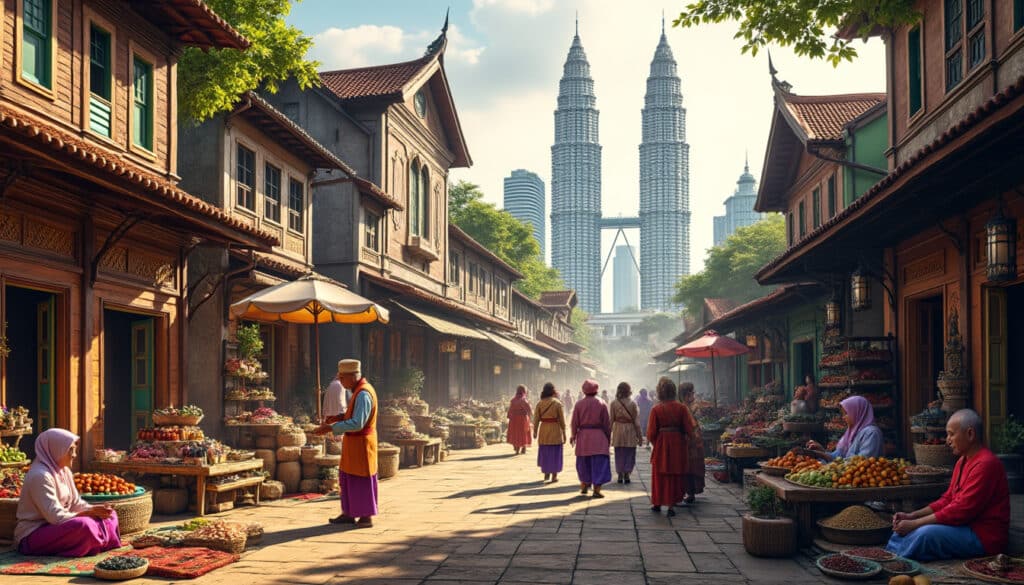Nestled in the heart of Malaysia, Kuala Lumpur is a city of contrasts, where the ancient mingles with the ultra-modern and diverse cultures blend seamlessly. Known for its iconic Petronas Twin Towers, bustling street markets, and vibrant nightlife, the city is a true reflection of Malaysia’s eclectic spirit. Yet, beyond its surface-level charm, Kuala Lumpur holds within its folds a tapestry of unusual facts and pressing social issues that paint a broader and more complex picture of life in the metropolis. From its historical milestones to the myriad of cultural influences, the city’s story is as multifaceted as its skyline. These peculiar truths and social dynamics not only shape the city’s identity but also influence its development as an international urban hub.
Hosting the Commonwealth Games: A Turning Point for Kuala Lumpur
In 1998, Kuala Lumpur rose to international prominence when it became the first Asian city to host the esteemed Commonwealth Games. This ambitious event placed Kuala Lumpur on the global map, attracting thousands of athletes and spectators from around the world. The Commonwealth Games usher in a celebration of sports and camaraderie, bringing together participants from countries sharing historical ties with the British Empire. Nations such as India, Pakistan, and Australia strive to showcase their athletic prowess on this stage, highlighting both competition and unity.
This monumental event wasn’t just about sports. It was a transformative period for Kuala Lumpur, infusing the city with an international spirit. The infrastructure built for the Games, including the National Stadium in Bukit Jalil, played a pivotal role in modernizing the city’s realm of sports and recreation. New roads, public transit improvements, and hospitality facilities were established, which continue to serve residents and visitors to this day. Hosting the Games also provided Kuala Lumpur with the impetus to promote itself as a tourist and business destination, ultimately leading to increased foreign investment and international partnerships.
However, the Commonwealth Games weren’t without their challenges for Kuala Lumpur. Ensuring sufficient facilities and accommodations was a monumental task, requiring significant city planning and logistical oversight. Financially, while the Games brought in considerable revenue, the initial investment was substantial, leading to debates on economic priorities and the impact on local communities.
The legacy of the Commonwealth Games in Kuala Lumpur is both cultural and infrastructural. Unearthing hidden talents and fostering sportsmanship, the Games left lasting impressions on generations of Malaysians, igniting interest in various sports such as badminton and athletics. Culturally, the Games celebrated diversity, unity, and the power of sport to bridge cultural gaps.
| Aspect | Details | Emojis |
|---|---|---|
| Year Hosted | 1998 | 🎉 |
| Location | Bukit Jalil | 🏟️ |
| Primary Participants | 54 Nations | 🌏 |
| Key Developments | Stadiums, Transit, Hospitality | 🚇🏨 |
| Long-term Impact | Tourism Boost, Sports Culture | 🏅✈️ |

The meticulous planning and execution of the Commonwealth Games in 1998 not only propelled Kuala Lumpur into the international arena but also laid the groundwork for its future urban and cultural landscape. Such events encapsulate the city’s ability to harmonize tradition with modernity, emerging as a beacon of diversity and growth in the heart of Southeast Asia.
Kuala Lumpur’s Hidden Religious Diversity
Kuala Lumpur stands out as a beacon of religious multiplicity, with its skyline punctuated by churches, mosques, and temples, each narrating its historical saga. This mosaic reflects the city’s commitment to embracing its diverse religious roots. The city’s religious tapestry includes Islamic, Buddhist, Hindu, and Christian places of worship. As the home to the majority Muslim population, the National Mosque of Malaysia garners primary attention, while other grand structures such as Thean Hou Temple and St. Mary’s Cathedral add to the spiritual resonance of the city.
A remarkable site that embodies Kuala Lumpur’s religious harmony is the Batu Caves, an amalgamation of natural splendor and spiritual sanctity. Located just outside the city, this limestone hill houses several Hindu temples and shrines, prominently the Cathedral Cave, artistically draped with vibrant deities and mythological paintings. Each year, the Batu Caves attract throngs of devotees, especially during Thaipusam, a Hindu festival marked by elaborate rituals and fervent devotion. The Batu Caves Cultural Tours offer insights into these rich traditions, fostering a deeper understanding of the region’s spiritual ethos.
Intriguingly, this celebration of religious diversity isn’t merely confined to grand festivals but is woven into the daily life of Kuala Lumpur’s residents. For instance, during Ramadan, the city comes alive with celebrations and community gatherings, intertwining religious practice with community cohesion. The streets are adorned with lights, and bustling bazaars offer an array of culinary delights from sunset until the early hours of the morning.
In an effort to further promote Sustainable Kuala Lumpur, religious centers across the city have also adopted green practices, which include eco-friendly designs and waste management systems. This initiative aligns with global environmental trends and showcases the city’s progressive outlook.
- 🏛️ Majestic Places of Worship
- 🎉 Religious Festivals
- 🌿 Eco-Friendly Practices
- 🤝 Community Engagement
Thus, Kuala Lumpur exemplifies a harmonious blend of beliefs and practices, allowing residents and visitors alike to bask in the city’s spiritual grandeur. This religious unity not only epitomizes Malaysia’s foundational principles but also serves as a beacon for multicultural coexistence in an increasingly globalized world.
Kuala Lumpur’s Flood Challenges and Environmental Concerns
One of Kuala Lumpur’s enduring challenges is its susceptibility to flooding, a result of its geographical location at the confluence of the Klang and Gombak rivers. This precarious position means that during heavy downpours, the city is often at the mercy of floodwaters, posing numerous logistical and societal issues. The incessant rains, particularly during the monsoon seasons, result in significant disruptions, highlighting the pressing need for effective urban planning and infrastructure development.
Over the years, Kuala Lumpur has implemented innovative measures to counteract these natural challenges. Large-scale drainage systems and sophisticated flood-mitigation projects have been set up to minimize water accumulation and avert potential disasters. The Malaysian Nature Society plays a pivotal role in advocating for these environmental adaptations, emphasizing the necessity of striking a balance between urbanization and sustainable management.
Moreover, urban green spaces in Kuala Lumpur, like the renowned KL Eco City and KL Forest Eco Park, function as critical buffer zones. Such areas not only provide residents with lush recreational spaces but also aid in groundwater absorption and temperature regulation, mitigating the heat island effect often experienced in bustling metropolises.
| Flood Management Strategy | Description | Emojis |
|---|---|---|
| Drainage Systems | Redirect water flow during heavy rains | ⚙️🌧️ |
| Flood Barriers | Construction of levees and embankments | 🛡️🚧 |
| Urban Green Spaces | Enhance natural water absorption | 🌿🏞️ |
| Community Involvement | Educating residents about disaster preparedness | 📚👥 |
While significant strides have been made in flood management, ongoing environmental conservation remains crucial. Continued investment in sustainable urban planning will be vital in preserving the city’s ecological well-being, enabling Kuala Lumpur to maintain its unique blend of urban and natural allure.
Kuala Lumpur: A Shopper’s Paradise
The vibrant city of Kuala Lumpur is a shopper’s haven, offering an eclectic mix of modern malls, bustling street markets, and chic boutiques. With over 77 shopping centers, the city capitalizes on its reputation for retail, transforming everyday shopping into a cultural exploration.
One of the most iconic shopping locales is Bukit Bintang, akin to New York’s Times Square. It’s a hub for international luxury brands, vibrant street performances, and culinary delights. Visitors often flock to Pavilion Kuala Lumpur, a flagship mall renowned for its architectural elegance and range of high-end stores. Atelier-like shops offer not just merchandise but also immersive experiences.
The city’s street markets are just as captivating, vibrant with color and rich in variety. In Chinatown, the Petaling Street Market is famed for its sprawling selections, from handcrafted souvenirs to traditional Chinese remedies. Meanwhile, Little India in Brickfields brims with aromatic spices, colorful saris, and intricate jewelries, embodying the spirit of India in the heart of Malaysia.
- 🛍️ Pavilion Kuala Lumpur: Elegance @ Heart of Shopping
- 🎨 Kuala Lumpur Street Art Markets
- 🌶️ Little India: Spices & Culture
- 🕍 Chinatown: Artisans & Antiques
What sets Kuala Lumpur apart as a retail destination is its ability to combine heritage with contemporary flair. The city’s dynamic shopping environment encourages both spending and cultural immersion, making it an ideal destination for tourists seeking to explore Malaysia’s vibrant traditions through its retail offerings.
Social Dynamics and Issues in Kuala Lumpur
Kuala Lumpur is a melting pot of cultures, with social dynamics that reflect both the harmony and challenges of diversity. This vibrant metropolis is home to a tapestry of ethnicities, including Malays, Chinese, Indians, and various indigenous groups, each contributing to the city’s cultural mosaic. The linguistic diversity mirrors this, with Malay, Mandarin, Tamil, and English being the primary languages spoken across the city. However, navigating these diverse social fabrics also presents unique challenges, as seen in several key areas of social concern.
One significant issue is the economic disparity among different ethnic groups, which continues to pose socio-economic challenges. Economic policies and affirmative action initiatives have been implemented to address these disparities, aiming to create equitable opportunities for all residents. The Kuala Lumpur Tourism Board has actively promoted initiatives that support local businesses and cultural enterprises, striving to foster inclusivity and economic balance.
The LGBTQ+ community in Kuala Lumpur faces its own set of challenges, with societal attitudes and legal constraints influencing their daily realities. Despite these hurdles, advocacy groups like KL LGBTQ+ Alliance tirelessly work towards greater acceptance and equal rights for all members of the community. Awareness campaigns and grassroots movements have been pivotal in promoting understanding and celebrating diversity.
Simultaneously, environmental sustainability is at the forefront of Kuala Lumpur’s development agenda. Sustainable Kuala Lumpur initiatives emphasize minimizing carbon footprints and promoting eco-friendly practices within urban infrastructure and community living. As urbanization accelerates, balancing growth with environmental preservation remains a continuous challenge.
These social dynamics enrich Kuala Lumpur’s identity, painting a complex picture of a city in transition, grappling with its past while paving the way for a more inclusive future.
FAQ
-
What makes Kuala Lumpur’s shopping scene unique?
Its mix of upscale malls, vibrant street markets, and cultural boutiques offers both shopping variety and cultural immersion.
-
How does Kuala Lumpur handle its frequent flooding issues?
The city utilizes advanced drainage systems, flood barriers, and urban green spaces for effective flood management.
-
What languages are predominantly spoken in Kuala Lumpur?
Malay, Mandarin, Tamil, and English are the primary languages, reflecting the city’s cultural diversity.
-
What are some major religious sites in Kuala Lumpur?
Major sites include the National Mosque, Thean Hou Temple, and the Batu Caves, each showcasing the city’s religious diversity.
-
How does Kuala Lumpur promote sustainability?
The city focuses on environmental initiatives like urban green spaces, eco-friendly practices, and sustainable infrastructure development.
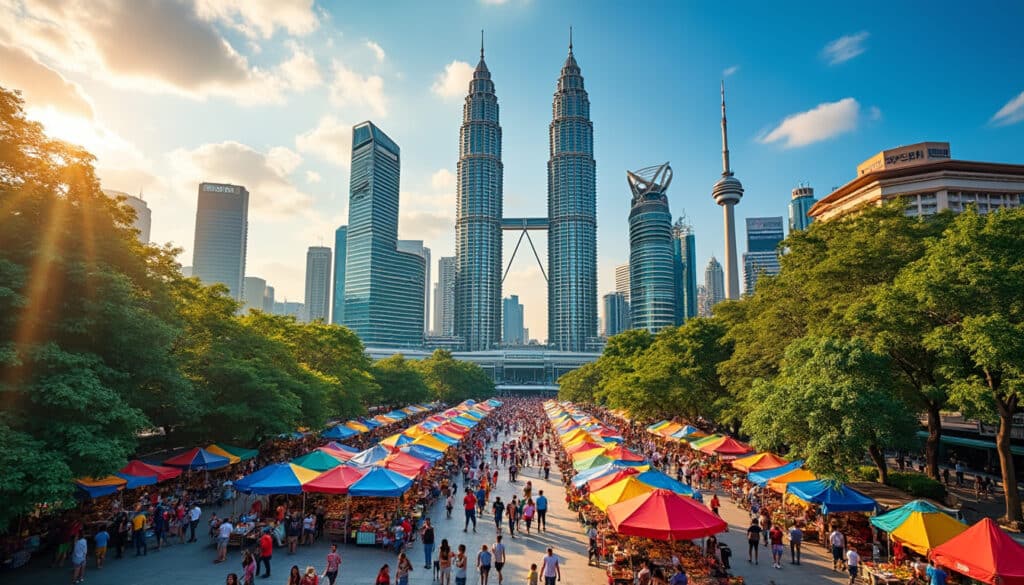
Fun Facts & Curiosities About Kuala Lumpur
Welcome to the multifaceted world of Kuala Lumpur, a city that captivates with its vibrant cultural tapestry and awe-inspiring landmarks. Known for the towering Petronas Twin Towers and its bustling street food scene, Kuala Lumpur stands as a testament to…

Architecture and urban features of Kuala Lumpur
Kuala Lumpur, a vibrant metropolis, stands as a testament to the harmonious blend of history, culture, and modernity. The cityscape is elegantly punctuated by towering skyscrapers, each reflecting the diverse tapestry of influences that have shaped the city’s architectural marvels.…
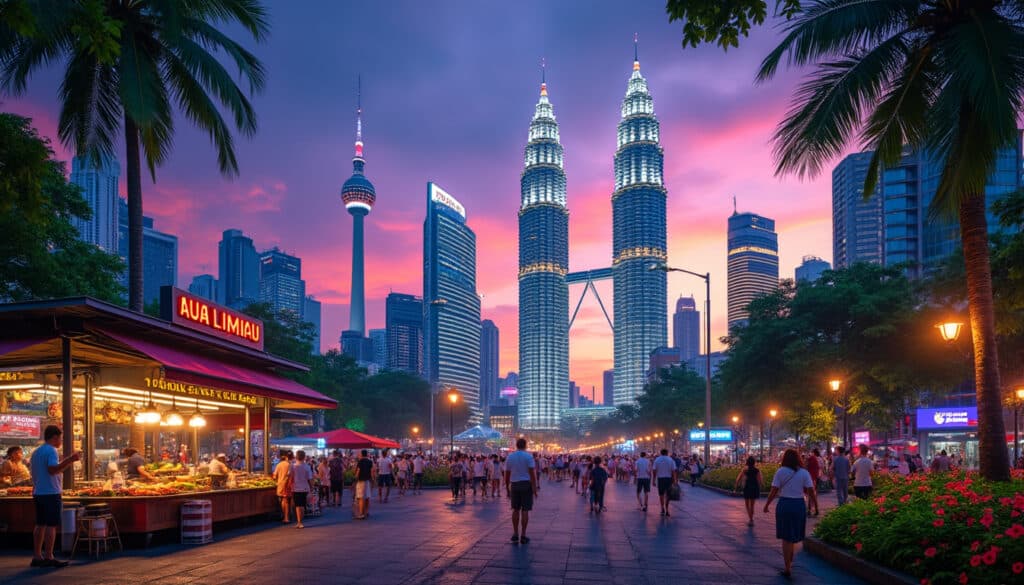
Basic facts about Kuala Lumpur
Kuala Lumpur, a vibrant metropolis and the capital city of Malaysia, is not just a hub of culture and commerce but a melting pot of tradition and modernity. With towering skyscrapers like the Petronas Twin Towers and the historical Batu…
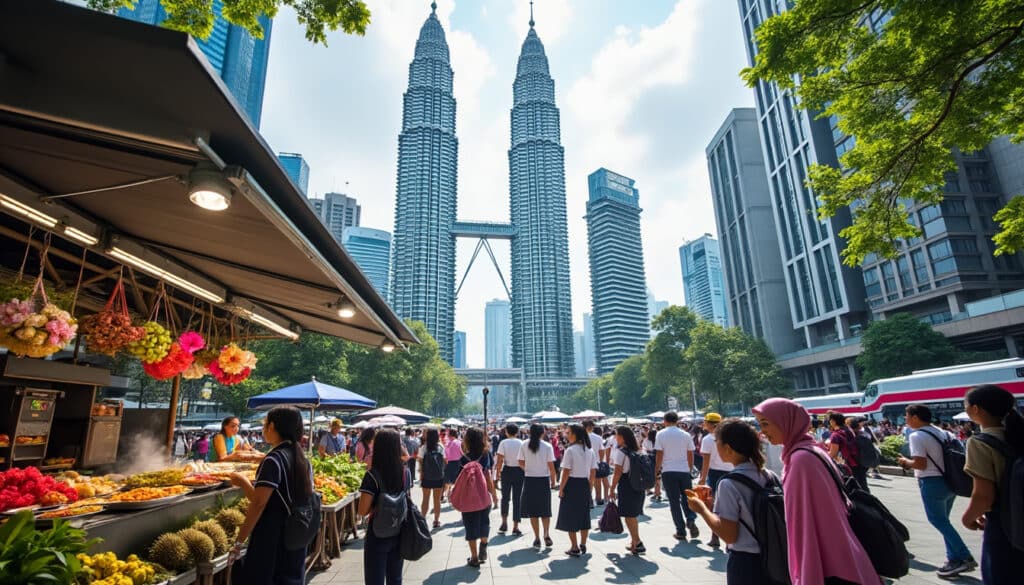
For those considering a move to vibrant Southeast Asia, Kuala Lumpur, affectionately known as “KL,” presents itself as a captivating blend of modernity and tradition. As the heart of Malaysia, this bustling metropolis offers an enticing mix of cultural diversity,…
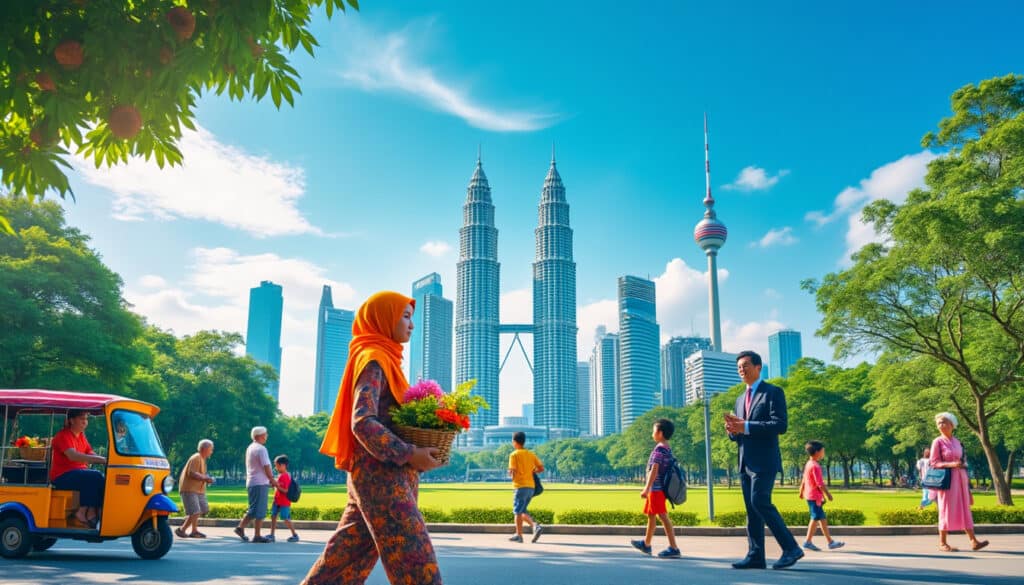
Demographics and geography of Kuala Lumpur
The demographics and geography of Kuala Lumpur present a vivid tapestry of cultures and landscapes, shaping this vibrant capital city of Malaysia. Renowned for its cultural diversity, Kuala Lumpur, or simply “KL”, stands as a beacon of Malaysia’s rich history…
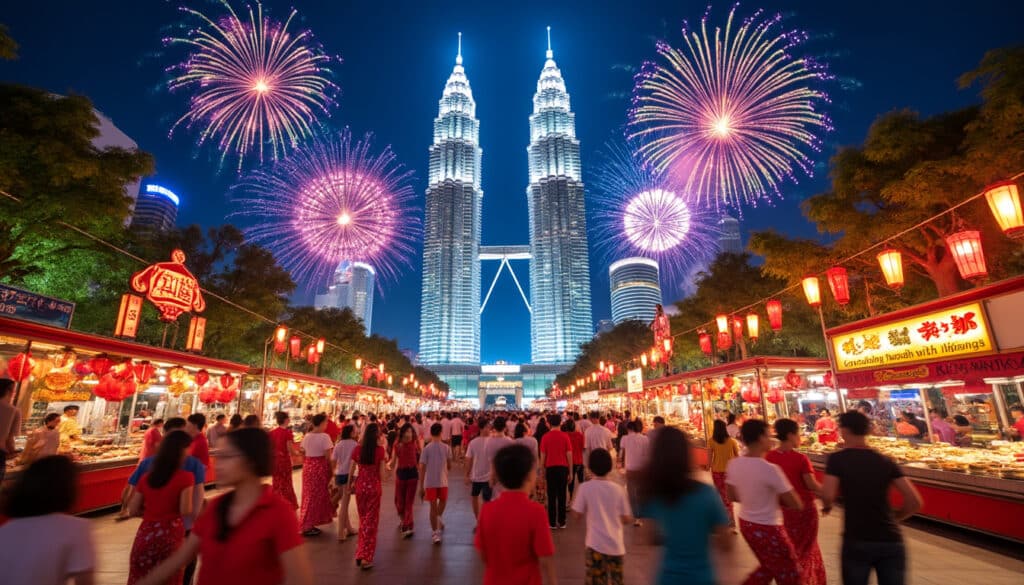
Holidays and celebrations in Kuala Lumpur
Kuala Lumpur is a city renowned for its vibrant celebrations and rich cultural tapestry. As the heartbeat of Malaysia, it hosts a plethora of holidays and festivities that attract both locals and visitors alike. With its diverse blend of Malay,…

Language and spelling of Kuala Lumpur
Dive into the bustling streets of Kuala Lumpur, and you’re engulfed in a symphony of languages reflecting the city’s rich multicultural tapestry. From the austere Bahasa Melayu to the vibrant chimes of Mandarin, each language contributes distinctively to the fabric…
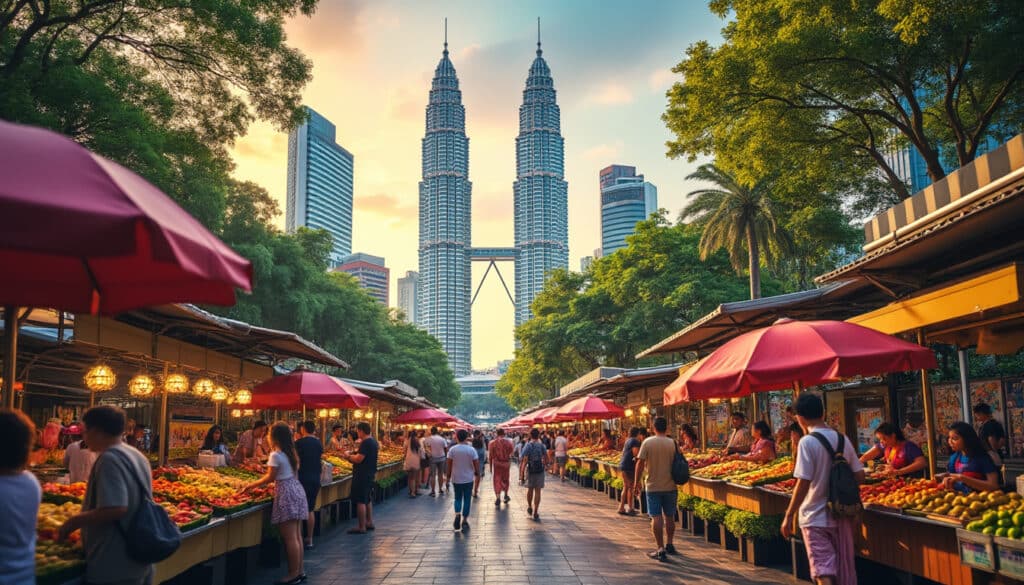
Local tips for tourists in Kuala Lumpur
Visiting Kuala Lumpur offers a unique blend of cultural diversity, vibrant city life, and historical richness. Whether exploring bustling markets, savoring local delicacies, or marveling at impressive landmarks, visitors will find an abundance of experiences. Embrace the city’s warmth and…
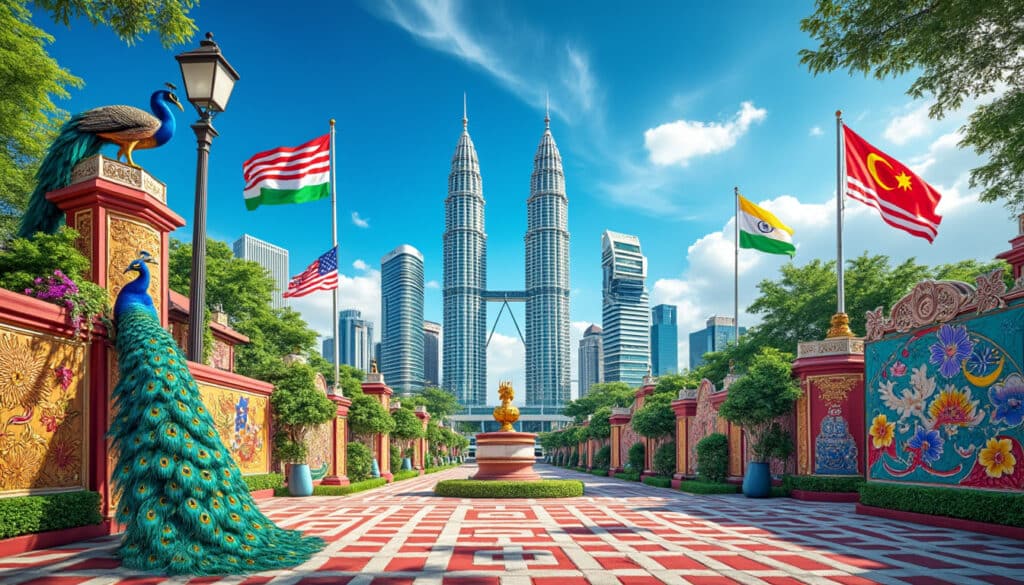
Names, flags, and identity of Kuala Lumpur
The vibrant city of Kuala Lumpur is a melting pot of cultural nuances, intricate flags, and a rich tapestry of identities that reflects its journey from a small tin-mining settlement to a bustling metropolis. As you walk through its streets,…
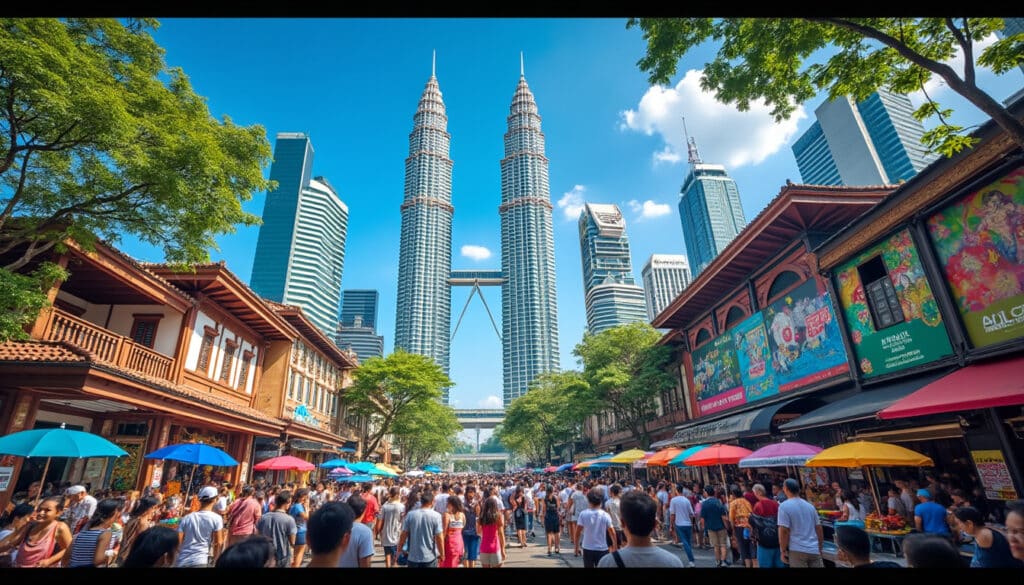
Reputation and identity of Kuala Lumpur
Kuala Lumpur, the bustling capital of Malaysia, is renowned for its unique blend of tradition and modernity. Often abbreviated as KL, this vibrant city stands as a testament to Malaysia’s rich cultural heritage and continuous urban development. From its iconic…

Time and time zone in Kuala Lumpur
Kuala Lumpur, Malaysia’s bustling capital, is not just a hub of vibrant culture and bustling street life; it is also a city intricately connected to its time zone, Maritime Time (MYT). Nestled in the GMT+8 zone, Kuala Lumpur lives by…
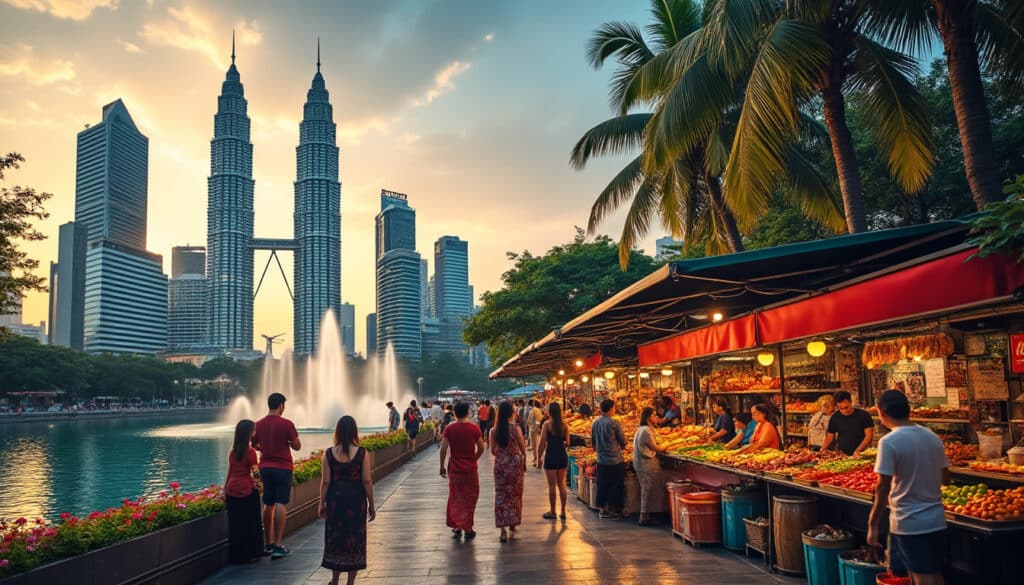
What does Kuala Lumpur look, smell, feel like?
Nestled between the hustle of thriving city life and the whispers of heritage that sing through its landmarks, Kuala Lumpur is a sensory tapestry that invites exploration. Whether you’re wandering through hidden alleyways or soaking in the skyline from afar,…


